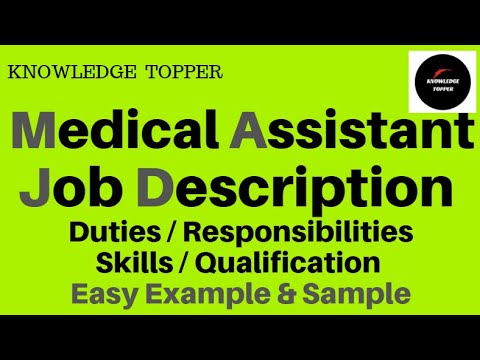How to Type a Professional Business Letter as a Medical Assistant
Contents
- Introduction
- The basics of a professional business letter
- The format of a professional business letter
- How to address a professional business letter
- The salutation of a professional business letter
- The body of a professional business letter
- The closing of a professional business letter
- The signature of a professional business letter
- Tips for writing a professional business letter
- Examples of professional business letters
Learn how to type a professional business letter as a medical assistant This guide will show you the proper format and tips for writing a letter that will get you results.
Checkout this video:
Introduction
Are you a medical assistant who needs to type a professional business letter? If so, there are a few things you’ll want to keep in mind. First, your letter should be typed in a standard business format. This means it should be typed on 8.5″ x 11″ paper, with 1″ margins all around, and should use a standard 12-point font such as Times New Roman, Arial, or Calibri.
When it comes to the content of your letter, there are a few important things to keep in mind. First, make sure you state your purpose for writing early on in the letter. Next, be sure to use clear and concise language throughout. And finally, make sure you proofread your letter carefully before sending it off – errors can reflect poorly on you and your company.
Following these simple tips will help ensure that your business letter is professional and polished.
The basics of a professional business letter
Most business letters follow a very simple format that you can adapt to any situation:
The Heading
The heading consists of your address, the date, and the address of the person to whom you are writing. If you are using letterhead stationery that includes this information, omit it from your heading. Begin with the date flush left, two lines below your letterhead. The date should be written out in full, such as January 1, 20xx or January 1st, 20xx. Omit the th if the day is written with a numeral. Leave one line of space between the heading and the inside address.
The inside address is the recipient’s name and address. It begins two lines below your last line of text in the heading. If you are uncertain of someone’s gender, write out their full name: Dear Kaitlyn Spencer rather than Dear Ms. Spencer. You may abbreviate Mr., Mrs., Ms., Dr., and Jr., Sr., or III with a period after each initial but you do not need to use a period after Miss or Mr when you include both a title and surname: Dear Mr Abbott; however, if you include only a surname, no title is necessary: Dear Abbott. When in doubt about how to address someone professionally, don’t hesitate to call his or her office and ask for assistance.
Leave one line of space between the inside address and the salutation. The salutation (also called the greeting) begins on the line below your last line of inside address, usually flush left. It should be followed by a colon (no comma). If you know someone’s name and title (Dr. Smith), use it; otherwise, use a courtesy title (Mr., Mrs., Ms.) followed by his or her last name only: Dear Mr Abbott; however, if you include only a surname without a courtesy title: Dear Abbott :when in doubt about gender identity don’t hesitate to ask for clarification before addressing an envelope or writing a letter). Use “Dear” before all courtesy titles when writing individually to more than one person; i .e . “Dear Mr Smith and Ms Doe” except when children are among those being addressed – then use “Dear Mr Smith, Mrs Doe and family” . In this case family indicates children as well as parents/grandparents etcetera . Use “Gentlemen” when addressing a group of men; use “Ladies” when addressing a group of women: Ladies and Gentlemen :When in doubt don’t hesitate to ask for clarification before addressing an envelope writing or emailing invitationThank-you etcetera ).
The format of a professional business letter
The format of a professional business letter is very important. The letter should be written in a businesslike manner, using formal language. It should be free of any grammar or punctuation errors. The letter should be typed on quality white paper using black ink. The letter should be addressed to a specific individual, and the envelope should be clearly labeled with the recipient’s name and address.
How to address a professional business letter
When you are writing a business letter, it is important to include the correct titles for the recipients. Address the letter using the proper titles for the recipient’s position. If you are unsure of the person’s gender, you can use “Mr.” or “Ms.”
The following list includes some common business letter titles and their corresponding feminizations:
Actor/Actress – Actor
Assistant Manager – Assistant Manager
Brother/Sister – Brother/Sister
Businessman/Businesswoman – Businessperson
Chairman/Chairwoman – Chairperson
Congressman/Congresswoman – Congressman/Congresswoman
Co-Worker – Co-Worker
Crew member – Crew member
Doctor – Doctor
Foreman/Supervisor – Foreperson
Heir/Heiress – Heir
Host/Hostess – Host
Landlord/Landlady– Landlord/Landlady
Mailman/Mailwoman– Mail Carrier Male nurse — Nurse Policeman/Policewoman — Police Officer Service manager — Service manager Steward/Stewardess — Flight attendant Waiter/Waitress — Server
The salutation of a professional business letter
The salutation of a professional business letter is an important element of the letter. The salutation should be formal and should include the recipient’s title and last name. For example, “Dear Mr. Smith.” If you do not know the recipient’s gender, you can use a neutral salutation such as “Dear Sir or Madam.”
The body of a professional business letter
The body of your professional business letter should be concise and direct. It should not exceed one page in length, and it should be free of grammatical and spelling errors. The following tips will help you write a professional business letter that will make a good impression on your reader.
– Use a standard business letter format. The format of your letter should include a heading, salutation, body, and closing.
– Use a clear and legible font, such as Times New Roman or Arial, in size 12 point type.
– Address your reader by name, if possible. If you do not have a contact name, use a generic salutation such as “Dear Sir or Madam” or “To Whom It May Concern.”
– Avoid abbreviations and slang terms. Use proper spelling and grammar throughout your letter.
– Be sure to proofread your letter before sending it. Have someone else read it over to catch any errors you may have missed.
The closing of a professional business letter
There are a few different ways you can close a professional business letter as a medical assistant “Sincerely” is always a good option, followed by your signature and typed name. You could also choose to end with “Best,” “Warmest Regards,” or something similar. If you know the recipient well, you could even close with “Love” followed by your signature.
The signature of a professional business letter
As a medical assistant there will be times when you will be asked to type a professional business letter on behalf of a physician or other medical staff member. It is important to know how to format such a letter correctly in order to maintain a professional image for the practice.
The signature of a professional business letter should include the typed name, title, and contact information of the person the letter is from. This should be followed by a handwritten signature. If you are unsure of how to format the signature, ask your supervisor for guidance.
Tips for writing a professional business letter
When you are writing a business letter as a medical assistant there are certain things you should keep in mind to make sure that your letter is professional and effective. Here are some tips to help you get started:
1. Use a formal tone. This is not the time to use slang or informal language. Make sure that your language is clear and concise.
2. Avoid abbreviations. When you are writing a formal letter, it is important to use proper spelling and grammar. This means that you should avoid abbreviations whenever possible.
3. Use standard business format. When you are writing a business letter, it is important to follow standard format. This includes using a header, salutation, body, and closing.
4. Be clear and concise. When you are writing a business letter, it is important to make sure that your message is clear. Avoid rambling on or including unnecessary information. Stick to the point and be as clear as possible.
5. Proofread your letter before sending it out. Once you have finished writing your letter, take the time to proofread it before sending it off. This will help ensure that there are no errors or typos in your letter
Examples of professional business letters
Sending a professional business letter as a medical assistant is important. The following are examples of professional business letters:
To Whom It May Concern:
I am writing to recommend [insert name] for the position of Medical Assistant at your organization. [He/She] is a highly skilled and motivated individual who would be a valuable asset to your team.
Sincerely,
[Your name]







